Dasan Chodang (Historic Site Related to Jeong Yak-yong) (다산초당 (다산 정약용 유적지))
12.2 Km 20200 2023-06-19
68-35, Dasanchodang-gil, Gangjin-gun, Jeollanam-do
+82-61-430-3911
Dasan Chodang is the house where Jeong Yak-yong (pen-name Dasan, 1762-1836) lived during his exile. He was a scholar of the late Joseon dynasty and is noted for his great contributions to the development of practical learning in Korea. After he was expelled to Ganjin for writing a secret letter of appeal for religious freedom, which later was named ‘the Hwang Sa-yeong Baekseo’, he lived in the house for 18 years while studying practical learning (‘Silhak’ in Korean). Most of his famous books were written in Dasan Chodang. While walking along a road near Dasan Chodang, you can see the Cheonilgak pavilion, which offers a great view of beautiful Gangjin Bay. Not far from Dasan Chodang is the Dasan Museum, where visitors can learn about the life of Dasan.
Da hyang so ckuk [Korea Quality] / 다향소축 [한국관광 품질인증]
12.4 Km 11358 2020-09-10
7-5, Dasanchodang 1-gil Doam-myeon, Gangjin-gun, Jeollanam-do
+82-10-3616-0360
'Dahyang Sochuk is a traditional Korean guesthouse with 70 years history located near the entrance to Dasan Chodang (Dasan Jeong Yakyong Historical Site) in Gangjin-gun, Jeollanam-do. The guesthouse is like a folk museum where guests get to see the items that Korean ancestors actually used. One of the advantages of staying at Dahyang Sochuk is that you can have all the green tea you want because there are wild green tea plants growing around the building. The areas around the guesthouses are decorated with unique bonsai trees and flowers all seasons for the guests to enjoy. All the rooms are coated with red clay and furnished with naturally dyed linens, both of which are healthy for the body while very smooth to the touch and aromatic. Right before winter, an array of potted chrysanthemums is placed along the entranceway, making you forget the cold weather for a moment. All in all, it’s a great place to stay and relax amid nature.
Gangjin Baengnyeonsa Temple (백련사 (강진))
12.5 Km 10393 2020-04-04
145, Baengnyeonsa-gil, Gangjin-gun, Jeollanam-do
+82-61-432-0837
The original name of Baengnyeonsa Temple was Mandeoksa Temple, said to have been built by Preceptor Muyeom during the reign of Silla King Munseong. Later, Preceptor Wonmyo rebuilt it in the old site during the reign of King Huijong (7th year) during the Goryeo period. He gained fame as Baengnyeongyeolsa so the temple began to be called Baengnyeonsa Temple. Baengnyeongyeolsa has produced eight preceptors of Goryeo and flourished throughout 120 years. In addition, the area is famous as the place where Dasan Jeong Yak-yong and Master Hyejang connected and developed companionship regardless of religious and age differences during Jeong was exiled to Gangjin.
The temple’s most popular attraction is Forest of Common Camellias, designated as Natural Monument No. 151. The Camellia trees, skirting the road to the temple, make up a forest covering the area of 9,917 ㎡ over the ruined Haenghotoseong Earthen Fortification next to a memorial stone. In the forest, four stupas of Goryeo and Joseon Era are scattered like hide-and-seek. The forest features a tranquil ambience all year long even in daytime, thanks to the thick, green leaves. From November, the camellia flowers are in full bloom and the forest becomes red, beautiful enough to inspire visitors. After passing the forest on the way to Dasan Chodang, visitors can glimpse a colony of tea fields and wild tea produced by Baengnyeonsa Temple. The mountain where Baengnyeonsa Temple is situated has had wild tea fields grown from Goryeo Era so that it was called "Dasan." For this reason, Jeong Yak-yong’s pen name is "Dasan" which holds the valuable meaning of his banishment here.
Bohae Plum Farm (보해매실농원)
14.4 Km 20967 2020-02-06
125-89, Yedeok-gil, Haenam-gun, Jeollanam-do
+82-61-532-4959
Established in 1979 in Haenam, Jeollanam-do by the Bohae Brewery, Bohae Plum Farm (Bohae Maesil Nongwon) is the largest green plum farm in Korea. Every spring, as maehwa (apricot flower) blossoms begin to bloom on maesil (green plum) trees, the brewery opens the farm to the public, providing an opportunity to enjoy the beautiful blossoms, and also to purchase fresh plums. To this day, the brewery produces and sells various maesil products made with the plums harvested from the farm.
Gangjinman Bay (강진만)
14.6 Km 26045 2020-03-27
Beoljeong-ri, Gangjin-gun, Jeollanam-do
+82-61-430-3114
Gangjin has many scenic landscapes with Wolchulsan Mountain to the north and the sea of Gugangpo dotted with numerous islets and wetlands to the south. It is also home to beautiful mountains, rivers, and plains that add to its scenic beauty and natural features. The Baengnyeonsa Temple and Dasan Chodang to the west of Gangjinman Bay, and the reeds along the coastline are a beautiful sight to behold. Also, the National Highway No. 23 that runs along the eastern border of the Gangjinman Bay, past the town of Gangjin-eup to Maryang, is famous for its many spectacular sights. Above all, it is highly recommended to hike up the Cheonilgak Pavilion in front of the Dasan Chodong Dongam (east hermitage) for a panoramic view of Gugangpo’s coastal waters. The hiking trail that traverses Mandeoksan Mountain leads to Baengnyeonsa, which is a temple with breathtaking ocean view.
Haemaru healingsoup [Korea Quality] / 해마루 힐링숲 [한국관광 품질인증]
14.7 Km 5747 2020-12-12
108-35, Donghae-gil Bukpyeong-myeon, Haenam-gun, Jeollanam-do
+82-10-2332-6303
'Haemaru Healing Forest is a guesthouse situated at the foot of Duryunsan Mountain, Haenam in front of Wondo Beach and surrounded by a cypress grove. The mountain, cypress grove, and beach are all visible from the main floored hall room. For this reason, many of the guests who stayed here say that the picturesque view seems to change day by day. The town where the guesthouse is located is specially designed as a 'hanok village,' consisting mostly of traditional Korean houses of Jeollanam-do. It is also widely known as 'Haenam Kimchi Village' because of their famous cabbages, which are grown in the natural environment and are used to make kimchi. Specifically, there are three villages in this area: 'Green Experience Village,' 'Farm Stay Village,' and 'Resort Village.' There is a public swimming pool in the area managed by the villagers and is very popular among visitors, with ticket sales reaching KRW 100,000,000 a year. One of the advantages of staying at this guesthouse is that it’s within a one-hour ride to a number of popular nature destinations such as Wando Cheongsando Island, Gangjin Dasan Chodang, Jangheung Cheongwansan Mountain, Woodland, and Yeongam Wolchunsan Mountain. Haenam is known as one of the best regions of Korea for enjoying the famous Jeolla-do cuisine, so visitors to Haenam are advised to try the local food. The villagers built these traditional Korean guesthouses so that their visitors can have a day of relaxation in nature, away from their hectic city life. With this mind, they used natural pinewood and red clay from Gangwon-do to build authentic traditional Korean houses and utilized traditional Korean tiles from Goryeong. The name 'Haemaru Healing Forest' was given by the owner of the guesthouse, with the subtitle 'A place where you can tell your story.' The guesthouse buildings are in 'ㄱ' shape. The main building, called 'anchae' in Korean, has floor area of 72m², which is big enough for up to 25 people. There are two rooms, a large living room, and a kitchen in this building. The rooms are furnished with sofa, television, air conditioner, refrigerator, and table just like an ordinary home so that guests can feel at home during their stay. The 'bakkatchae,' or 'detached house,' is a single room with capacity of 6 and is furnished with air conditioner and bathroom. The guesthouse is owned by a couple who still work in Seoul and need to travel back and forth between Seoul and Haenam frequently. They're both nature lovers, so their most favorite place in the house is the kitchen garden where they cultivate their own organic lettuce, perilla leaves, and chili peppers. The kitchen garden is open to guests who want to try the homegrown organic vegetables. Various experience programs are offered here as well, such as yunnori, dadeumi, jwibulnori, and kimchi making. Jwibulnori is a traditional Korean game played on the eve of Daeboreum or First Full Moon Day, where people burn dry grass on the ridges of rice paddies and fields and others spin cans of flames attached to the end of a stick or a sling. For safety reasons, this game is played with the consent and participation of the villagers, so be sure to ask the owner of the guesthouse when the game is played. It’s free for groups of more than 10 people. As for the kimchi-making class, it is offered by the guesthouse owner's younger brother and sister-in-law who live and run a kimchi factory in the village. They will teach you how to make kimchi, step-by-step, start to end. The kimchi-making class is a paid program, so be sure to ask the guesthouse owner how much and when the class is held.
Gaudo Suspension Bridge (가우도 출렁다리)
15.1 Km 1825 2024-01-11
San 7-1 Singi-ri, Doam-myeon, Gangjin-gun, Jeollanam-do
Gaudo Island, the only inhabited island among Gangjin's eight islands, is connected to the mainland by a suspension bridge. The suspension bridges installed on both sides of the island have emerged as Gangjin's famous destination, attracting hundreds of thousands of visitors every year. While crossing the dizzying suspension bridge, one can see the wonderful seascape that changes in brightness depending on the waves. The footbridges, Jeodu Suspension Bridge (438 m) or Dasan Bridge (716 m), can be used to entrance Gaudo Island, and there is also a clean trail along the coastline. It takes about one to one and a half hours to walk across both bridges, making it a great place to enjoy a walk.
Gaudo Island (가우도)
15.1 Km 11488 2022-07-28
473, Wolgot-ro, Gangjin-gun, Jeollanam-do
+82-61-430-3114
Gaudo Island is the only populated island of the eight islands in Gangjinman Bay. It used to be part of Daegu-myeon until 1789 but later changed to Boam-myeon and is currently part of Doam-myeon since 1914 due to reorganization of administration. The name comes from its appearance in relation to Boeunsan Mountain in Ganjin-eup, which looks like a cow’s head. The whole island resembles a cow’s meonge (curved stick around cow’s neck used to drag farming tool) so the island became to be called Gaudo Island (Ga: Meonge in Chinese characters).
From Gaudo Island, Gangjinman Bay and uninhabited island can be seen in all directions. The coastal scenery is stunning and varied natural tourism resources grow here such as the silver magnolia, cypress colony, and Japanese black pines. Visitors can walk to the island from the mainland via a suspension bridge. When arriving to the island, a 2.5km long ecological exploring road along the mountain and coast is available. Also, fishing park which has various kinds of fishes is located in the spot where visitors can overlook at beautiful scenery of Gangjinman Bay. At the top of the island, visitors can enjoy a zip track which is an eco-friendly leisure facility, starting from Cheongja Tower (25m high).
Tracksite of Dinosaurs, Pterosaurs, and Birds in Uhang-ri (우항리 공룡화석자연사유적지)
15.5 Km 27625 2021-06-01
234, Gongnyongbangmulgwan-gil, Haenam-gun, Jeollanam-do
+82-61-530-5324
The Tracksite of Dinosaurs, Pterosaurs, and Birds in Uhang-ri is where the world's most intricate fossil footprints of dinosaurs and birds were discovered. The track site was designated as a Natural Monument for its significance and serves as an educational site for studying earth science and dinosaurs from the Cretaceous period. There is a museum that has on display 447 materials related to fossils, including actual fossil pieces of an Allosaurus, along with exhibitions dedicated to giant dinosaurs, sea reptile, and birds.
Haenam Uhangri Dinosaur Museum (해남공룡박물관)
15.5 Km 42503 2021-01-14
234, Gongnyongbangmulgwan-gil, Haenam-gun, Jeollanam-do
+82-61-530-5949
Following the discovery of a dinosaur footprint within the region in 1992, Haenam Uhangri Dinosaur Museum was founded to promote the area's significance as a fossil site. The museum provides materials and exhibitions related to dinosaurs as well as Ulhang-ri as a natural heritage site.
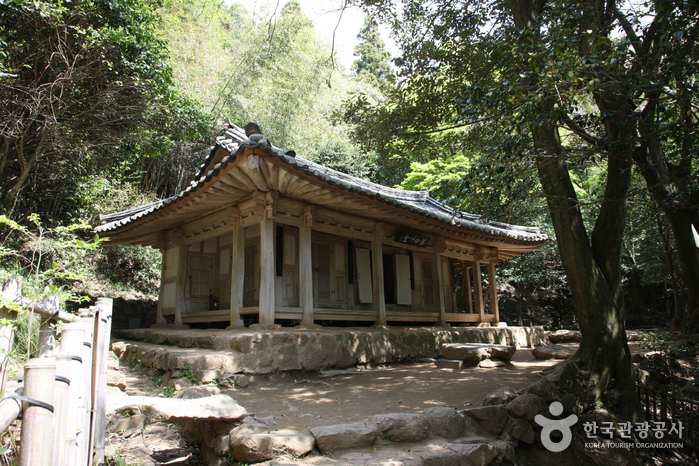
![Da hyang so ckuk [Korea Quality] / 다향소축 [한국관광 품질인증]](http://tong.visitkorea.or.kr/cms/resource/44/2575744_image2_1.jpg)
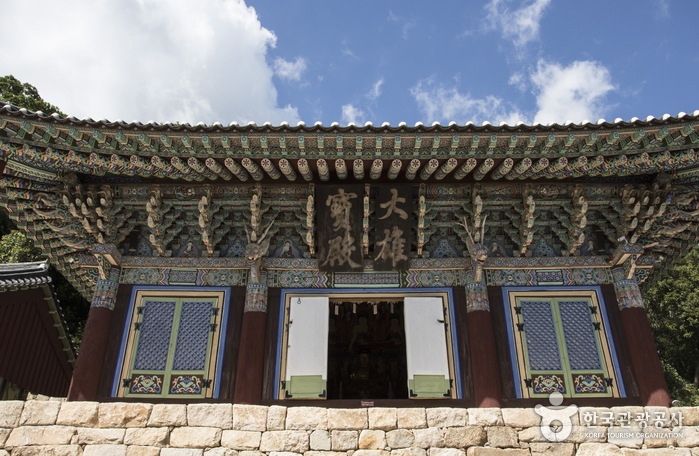
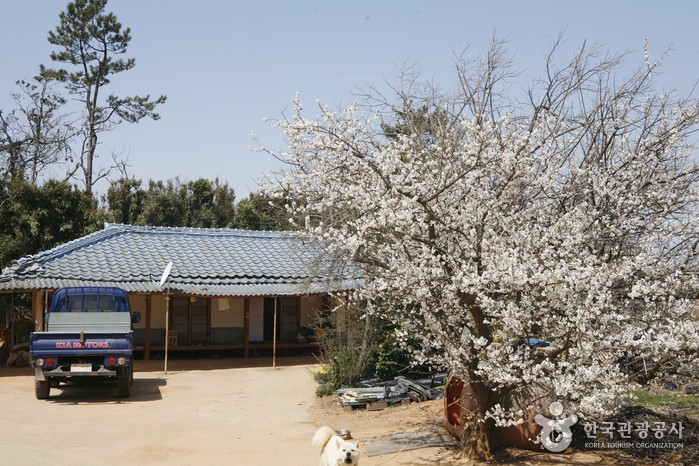
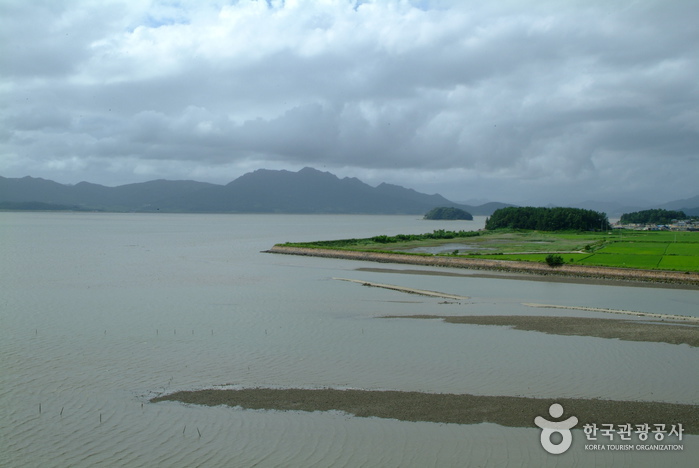
![Haemaru healingsoup [Korea Quality] / 해마루 힐링숲 [한국관광 품질인증]](http://tong.visitkorea.or.kr/cms/resource/35/2049835_image2_1.jpg)

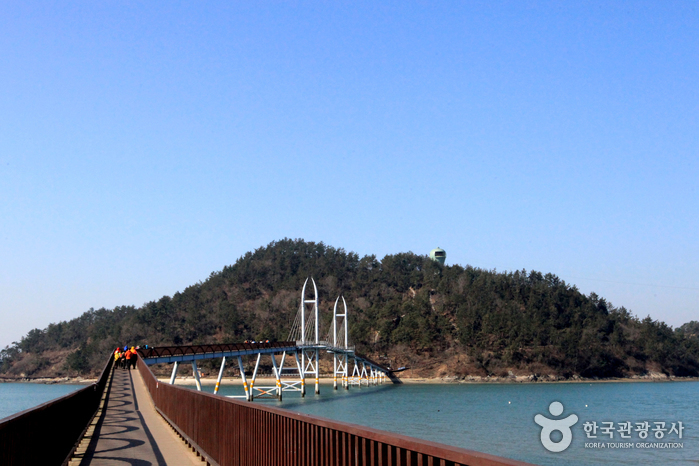
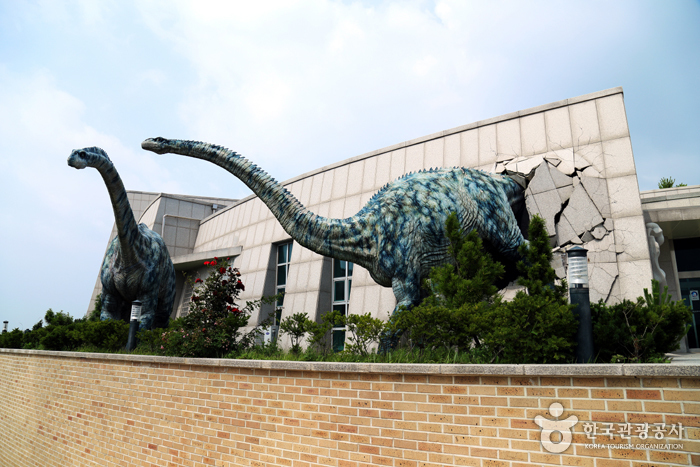
 English
English
 한국어
한국어 日本語
日本語 中文(简体)
中文(简体) Deutsch
Deutsch Français
Français Español
Español Русский
Русский